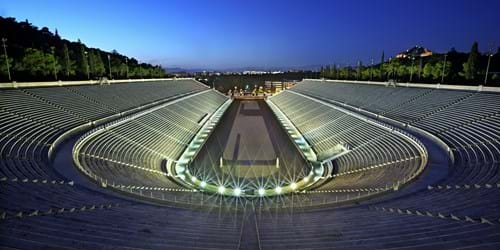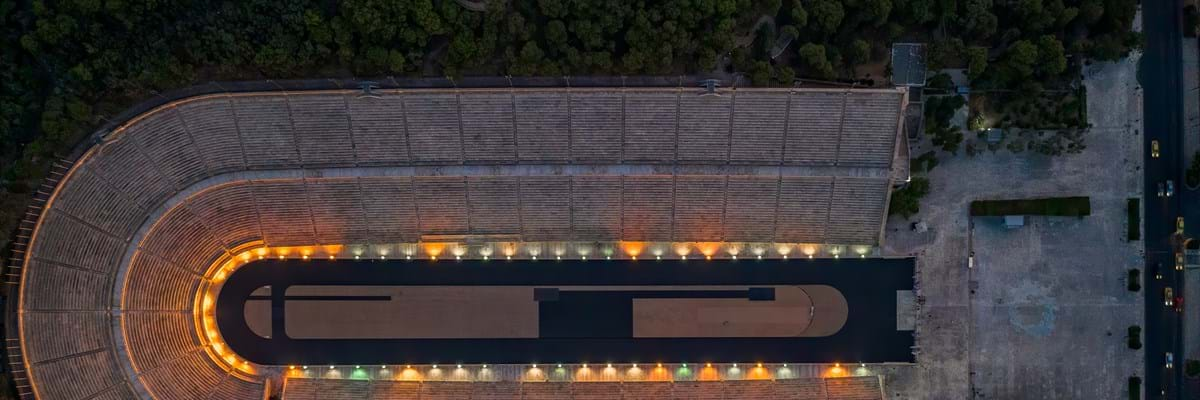Want to run the 100 metres in an Olympic Stadium (or, if it’s too hot, take the 100-metre stroll)? Then visit the amazing all-marble Panathenaic Stadium in Athens.
It was built in the 19th century to host the return of the Olympic Games. Now it’s one of the most popular tourist attractions in Athens.
The Games weren’t held for about 1,500 years after the Romans banned them for being part of a pagan festival. Then the French held a congress which decided the modern games would be held at the world fair in Paris in 1900.
The Greeks wanted them re-launched in the country of their origin – but Greece was bankrupt after centuries of Turkish occupation.
Welcome wealthy benefactor George Averoff who provided the funding - on one condition. The stadium had to be built of the same white marble as the temples on The Acropolis. That’s Pentalic marble from a mountain that, fortunately, was only a few miles from Athens.

The stadium of the old Panathenaic Games held in Athens in ancient times had already been excavated so the Greeks set about rebuilding it. And the brilliant white marble stadium hosted the opening and closing events of the new Olympic Games in 1896. Even better, a Greek athlete won the first modern marathon.
It’s been in continual use ever since. It became an Olympic venue again when the Olympics returned to Athens in 2004; the annual Athens’ marathon always ends there; every four years the stadium is the departure point for the Olympic flame when it leaves Greece for the next host country. The open-air stadium can seat 50,000 people and is a regular concert venue.
It costs a few euros to visit but people who don’t want to experience running on an Olympic track can sit on the marble seats and enjoy a spectacular view of The Acropolis. Or they can reflect on the history of a site that was used as a racetrack in the 5th century BC and experienced the horrors of gladiator fights in Roman times before becoming the launch site for the modern Olympics.
A statue of benefactor George still stands outside the stadium.
Date last updated:



